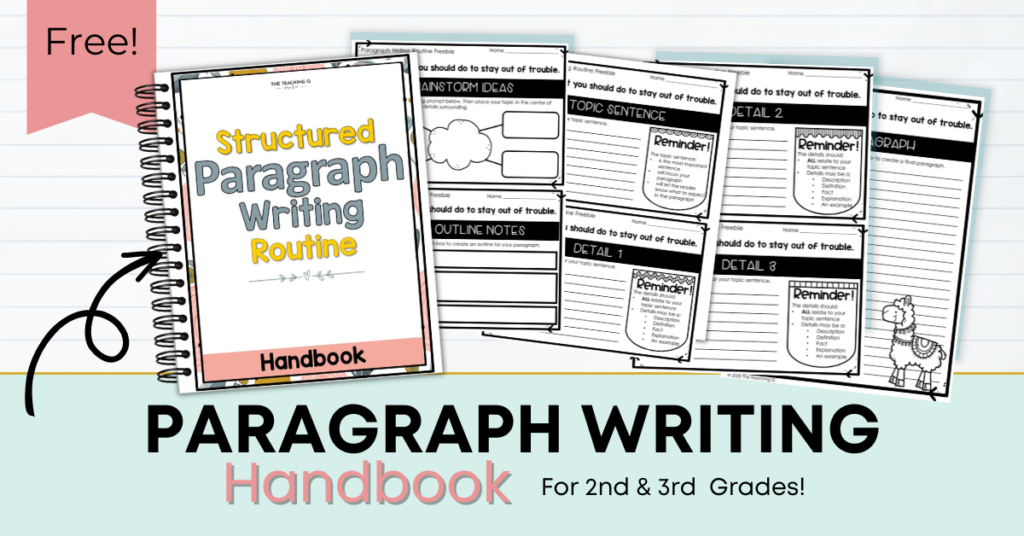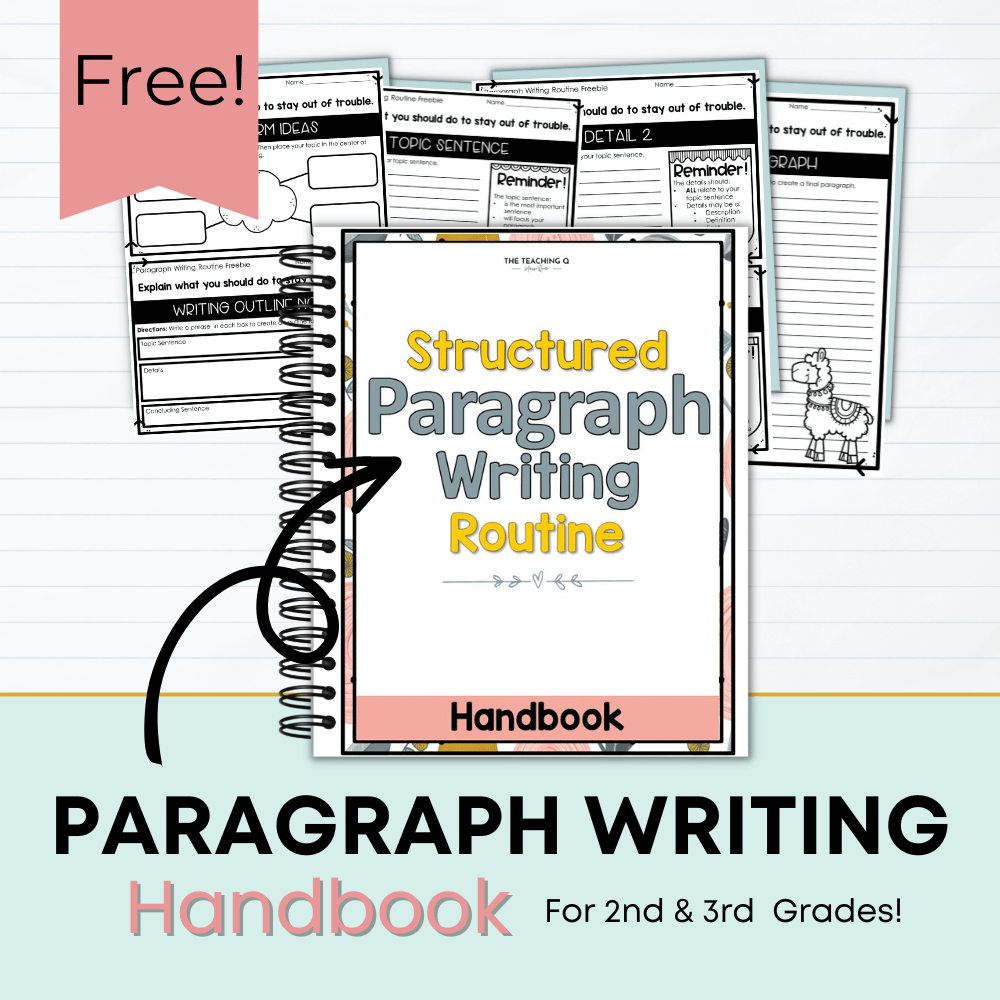If you’re looking for a narrative writing prompt that will have your students living “Apple-y Ever After,” this blog post is for you!
With a little imagination, an apple narrative writing prompt can be turned into a fun and engaging lesson for students of all ages. Here is an idea to get you started:
Narrative writing is a fun and engaging way for students to learn about the important elements of story structure. By using an apple narrative writing prompt, students can easily identify the key components of a narrative story while also developing their creative writing skills.
Here are some tips on how to use an apple narrative writing prompt to teach students the basics of narrative writing:
Brainstorming for the Narrative Writing Prompt
Start by asking your students to brainstorm ideas for a narrative story about two kids who become the best of friends, living “Apple-y Ever After.” Encourage them to be creative and think outside the box.
The Narrative Writing Structure
Once your students have come up with some ideas, help them narrow their focus by asking them to choose one specific event they want to write about.
One of the best ways for students to learn the narrative writing structure is by using a graphic organizer. A narrative writing graphic organizer can help students plan out their story, including the setting, characters, conflict, and resolution. This can be a valuable tool for students who are struggling with planning and organizing their thoughts.
Pair-Share
It’s important for students to share their thoughts with peers before writing to strengthen and build upon their ideas. This can be done through classroom discussion, small group work, or even informal conversations with friends. By talking about their narrative story ideas with others, students can develop them further and add more detail. This will ultimately result in a stronger and more well-developed narrative story.
In addition to talking with peers, another great way for students to develop their narrative story ideas is by doing some pre-writing brainstorming. This can involve anything from making a list of ideas to sketching out a rough story outline. By taking the time to brainstorm before writing, students will be better prepared to start writing their narrative stories.
So, the next time your students work on a narrative story, encourage them to share their thoughts with peers and do some pre-writing discussions. These two activities will help them develop stronger and more well-rounded narrative stories.
Write to the Narrative Writing Prompt
Once your students have all of the important elements planned out, they can start writing their narrative story. Encourage them to be descriptive and use concrete details to bring their story to life.
Another FREE resource I have that helps students understand how to write to a prompt is my Structured Paragraph Writing. Grab your copy today with this link.

Narrative Writing Rough Draft
One of the best things about narrative writing is that students can write a rough draft without worrying too much about writing conventions. This means that they can focus on getting their ideas down on paper without worrying about perfect grammar or punctuation.
Once students have written a rough draft, they can go back and revise it, making sure to fix any errors. This is where they will need to worry about the conventions of writing, such as grammar and punctuation. But in the initial stages of writing, students should feel free to let their ideas flow without worrying too much about perfection.
So, the next time your students work on a narrative story, encourage them to write a rough draft first. This will help them get their ideas down on paper without worrying about the conventions of writing. Then, they can go back and revise their story, making sure to fix any errors.
Narrative Writing Transitional Words
When students are writing narratives, it’s important for them to use transitional and time-order words. Transitional words help to create flow in a story by linking different ideas together. Time-order words help to sequence events in a story so that they are easy to follow.
Teaching students to use transitional and time-order words will help them create smoother and more cohesive narrative stories. To do this, you could start by modeling the use of these words in your own writing. Then, you could provide your students with a list of transitional and time-order words that they can refer to when they are writing. Finally, you could have them revise their narrative stories, making sure to add in transitional and time order words where needed.
One of the key elements of narrative writing is dialogue. Dialogue can be used to advance the plot, reveal character traits, and create tension.
However, if it’s not used effectively, dialogue can be confusing and frustrating for readers.
That’s why it’s important to teach students how to use dialogue effectively in their narrative stories. To do this, you could start by modeling the use of dialogue in your own writing. Then, you could provide your students with a list of tips for using dialogue effectively. Finally, you could have them revise their narrative stories, making sure to add in effective dialogue where needed.
By teaching your students how to use dialogue effectively in narrative writing, you can help them create stories that are engaging and enjoyable to read.
Revise and Edit
Finally, have your students revise their narrative stories and make any necessary changes. Once they are happy with their stories, encourage them to share them with the class or with a partner.
One of the best ways for students to revise their narrative stories is to do it with a partner. When students revise with a partner, they can get feedback on their story and make sure that they include all of the necessary elements.
Narrative Writing Checklist
To help your students revise their narrative stories with a partner, you could provide them with a checklist. This checklist should include all of the elements that should be present in a narrative story, such as well-developed characters, a clear plot, and effective dialogue. Once your students have finished revising their stories, they can use the checklist to edit their work and make sure that everything is included.
By revising their narrative stories with a partner and using a checklist, your students can create polished and professional-looking stories.
Narrative Writing Rubric
A writing rubric can be a helpful tool for students who are writing narratives. A rubric will help them to identify the areas in which they need improvement and the areas in which they are excelling.
To use a writing rubric, you will first need to create one. This can be done by finding an existing rubric online or by creating your own. Once you have a rubric, you will need to go over it with your students so that they understand how to use it. Finally, your students can use the rubric to self-assess their narrative stories.
By using a writing rubric, your students can get an accurate picture of their strengths and weaknesses as writers. This will help them to focus on the areas that need improvement and to continue excelling in the areas in which they are already doing well.
One way to add a finishing touch to your students’ narrative stories is to have them create an adorable craft-ivity. This can be anything from a character cut-out to a storyboard.
Print and then have students cut each of the printable pages out of colored construction paper or card stock. Then, you can put the craft-ivity together with your students. Finally, your students can use their craft-ivity to decorate their narrative stories.
By adding a craft-ivity to your students’ narrative stories, you can help them to create a polished and professional-looking final product.
“Done for You” Narrative Writing Prompt Materials
If you’re looking for a way to make your narrative writing unit easier, you could try using “done for you” materials. These are materials that have already been created and that can be used with little to no modification.
By using “done for you” materials, you can save yourself a lot of time and effort. This will allow you to focus on other aspects of your narrative writing unit, such as teaching the skills and strategies necessary for narrative writing.
There are a number of places where you can find “done for you” materials for narrative writing. If you are interested in this option, you can get it here.
Overall, the narrative writing apple-themed writing craft is a great way for students to learn about the narrative writing structure. By using this craft, students can create their own stories, revise them with a partner, and edit them using a checklist. Finally, they can top off their stories with an adorable craft-ivity. If you’re looking for an easy way to teach narrative writing, this is it!
Writing Fun
This fun and engaging apple-themed narrative writing prompt teaches your students about narrative writing. This narrative writing prompt is perfect for capturing student interest and creativity. Write a narrative story about two unlikely kids who become the best of friends, living “Apple-y Ever After.”
Not only will students love writing about these two friends, but they will also learn the narrative writing structure using a graphic organizer to support their writing. The importance of sharing their thoughts with peers before writing to strengthen and build upon their thoughts is also emphasized. Students will then write a narrative story about their friendship, revise it with a partner, and edit it using a checklist. Finally, they can top off their stories with an adorable craft-ivity.
Using an apple narrative writing prompt, you can easily teach your students the important elements of narrative writing while sparking their creativity. So, what are you waiting for?
Give it a try today!

Are your students struggling and making very little progress in writing? Or maybe they’re unmotivated or a reluctant writer? If so, I’ve got your back.
Yes…I…Do!
Let me share my secret sauce when it comes to teaching writing to elementary students.
It’s the Sentences, Paragraphs, and Essays: OH, MY! E-book.
Click this link to learn more about how the E-Book can transform your students’ chicken scratch, hap-hazard writing into strong, effective, glorious writing!
–Melissa


